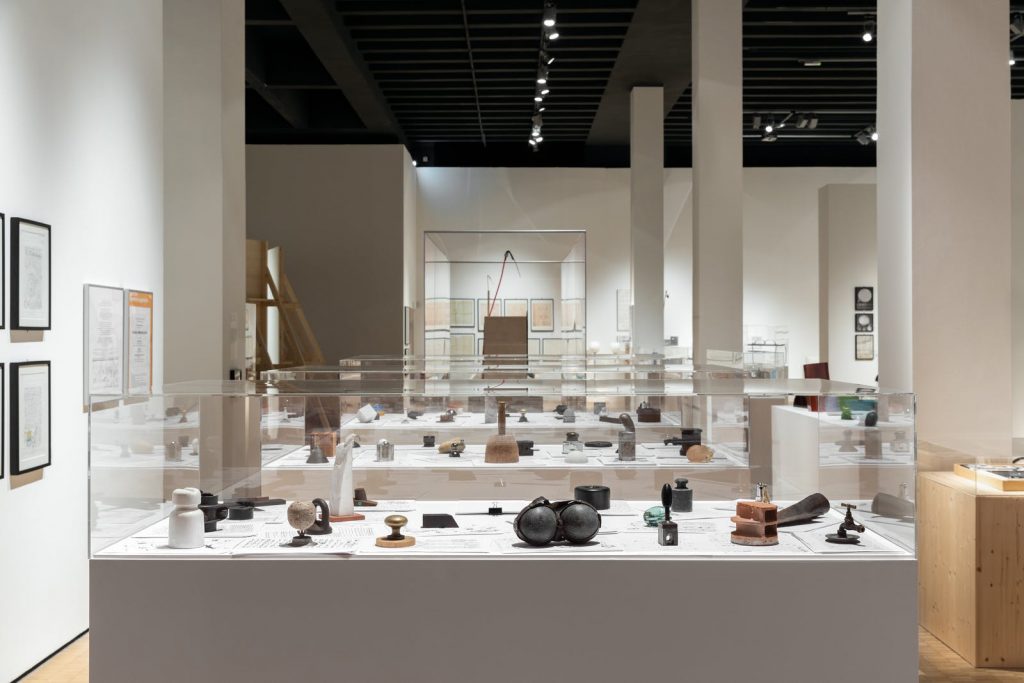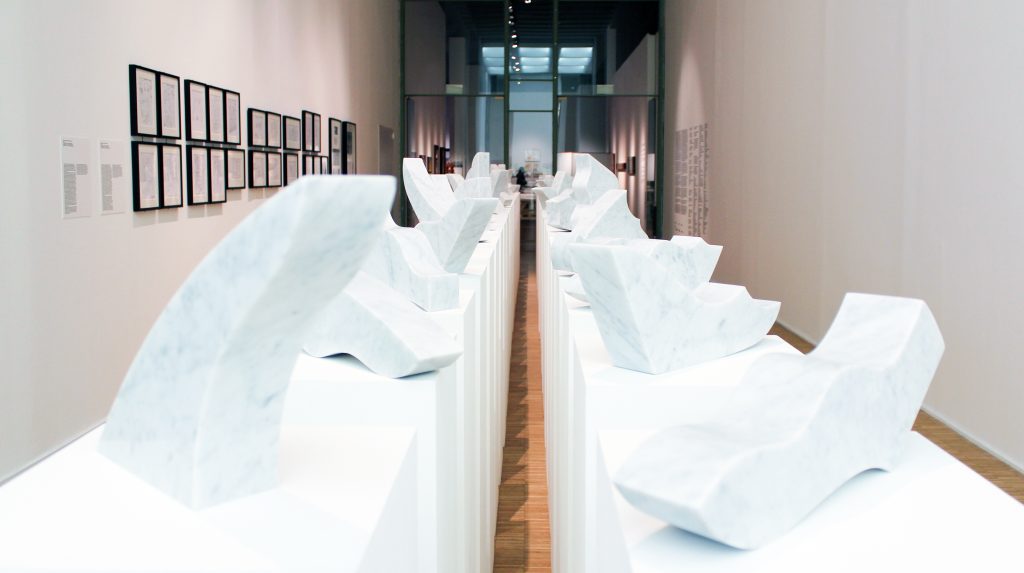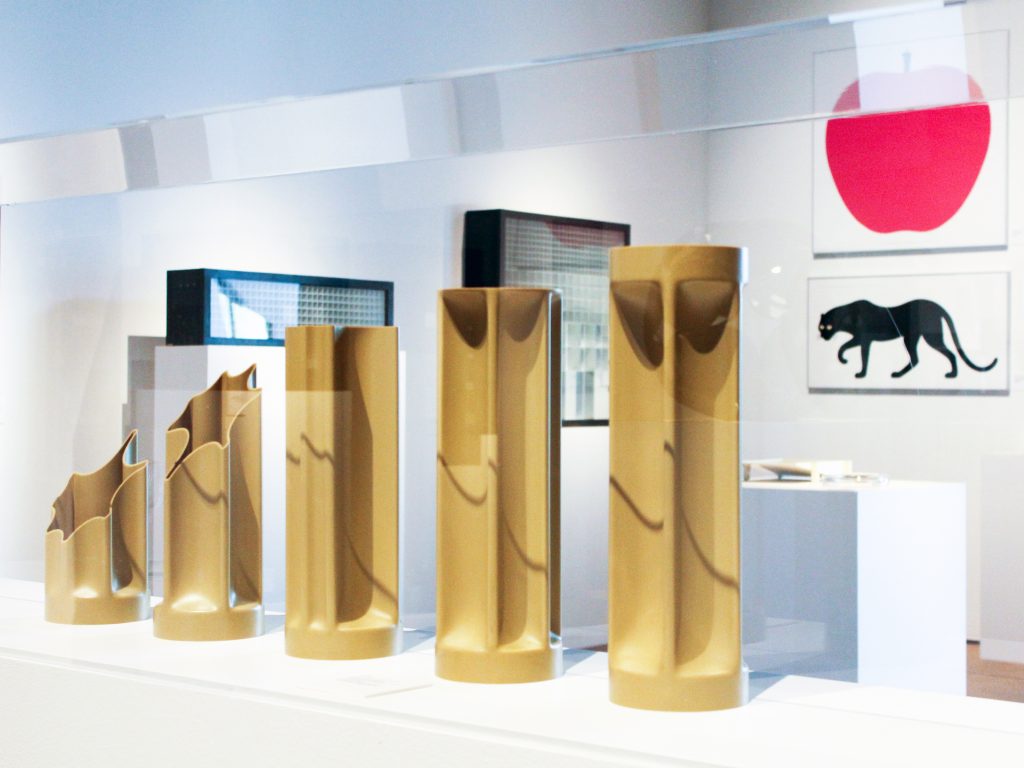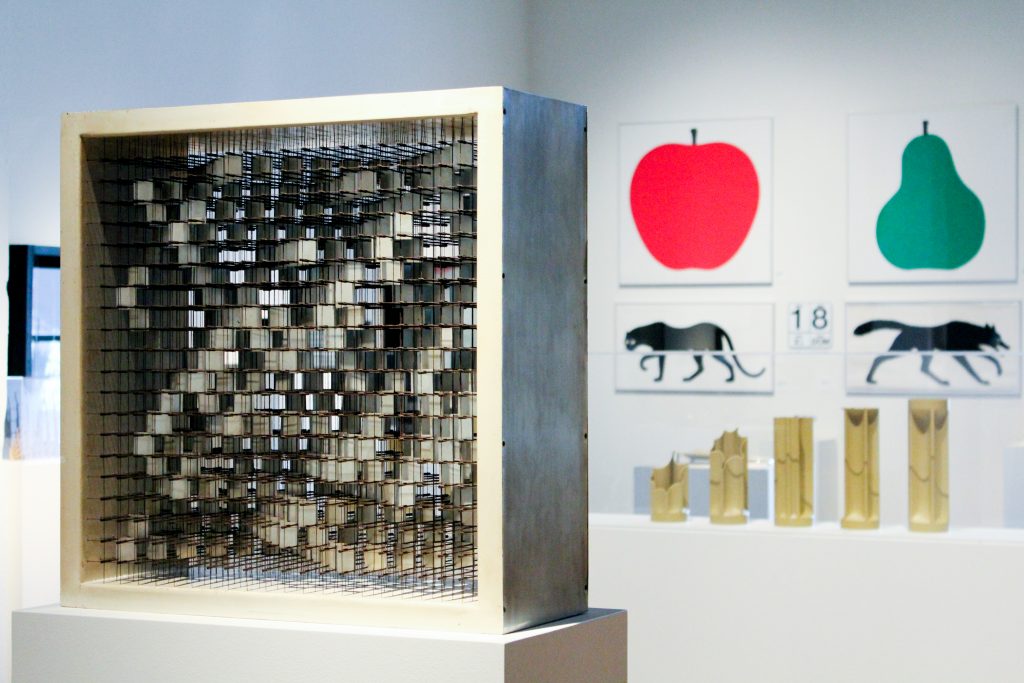La Triennale di Milano’s “Enzo Mari Curated by Hans Ulrich Obrist with Francesca Giacomelli” Retrospective
A vast exhibition of the Italian master’s work, which won’t be seen in public again for 40 years

Born from years of meetings and intense conversations between Enzo Mari and curator Hans Ulrich Obrist, the immense retrospective Enzo Mari Curated by Hans Ulrich Obrist with Francesca Giacomelli pays tribute to one of the masters of Italian design. Mari passed away aged 88 in October 2020, days after the show initially opened. Prior to his death, he requested that—after this exhibition—his work not be shown in public for another 40 years. Mari believed that only after this time period passes will we truly understand his oeuvre. Thus, it’s especially meaningful that the show at La Triennale di Milano, which shuttered due to the pandemic, has now reopened.

Tracing over six decades of Mari’s work, the exhibition comprises sketches, models, furniture, sculpture, film, posters, film and previously unseen pieces from the Enzo Mari Archive—which Mari donated to Milan’s Center for Advanced Studies on the Visual Arts at the beginning of 2020. A designer, artist, critic, professor and theorist, Mari created abstract works and intuitive everyday objects. Some of his iconic pieces, like the 1963 Formosa perpetual wall calendar and the 1966 Timor perpetual table calendar, are immediately recognizable. But this exhibition delves much deeper.
“Mari is a constellation,” Stefano Boeri, president of La Triennale and Mari’s longtime friend, tells us. “Because not only has he expressed himself through very different kinds of language, but also because he has deposited signs everywhere—in hundreds of private homes, in galleries, in archives and museum collections.”

Upon entering the exhibition, visitors first see an installation of abstract marble sculptures. Named “44 Valutazioni,” the work is made up of rows of 44 individual pieces that—if placed together correctly—create the hammer and sickle symbol. This massive unassembled marble jigsaw, accompanied by a poem by Francesco Leonetti, illustrates why Mari was often viewed as a provocateur and a polemicist, as well as a master of form.
Next, a series of studies from the ’50s and ’60s are dedicated to depth, dimensions, perceptual ambiguity and kinetic art. Appearing like a blend of abstract art and computer programming, these images explore themes that Mari revisited again and again.

“Mari was a genius,” Boeri says. “He managed to find a balance between almost scientific research of the possibilities of creativity and immediate and very powerful intuition. In this sense, he is unique in the history of Italian culture. He combined the analytical gaze of a mathematician and the amazement of a child, together with the great ability to find the essence of certain objects, certain phenomena, and even certain living beings. In the end, he always found the essence.” From his In Attesa wastebasket (an elegant but simple slanted plastic tube) to his Bambu vases, that essence imbues every piece on display.

For Mari, quality and function were of utmost importance, and far beyond fashion or market demand. His unwavering values coupled with an intransigence sometimes made him appear surly and detached, but there’s no doubting his playful and gentle sides. Boeri says, “He was gruff, but in the end, he was a good person, who came from a difficult life, from a very humble family. He was really a person who built a life with great courage and great passion. This was perhaps felt in the fact that he did not tolerate sloppiness and mediocrity. He had this underlying rigor that he would then dismantle with a smile.”

He also firmly believed that design was for all people, not just the very wealthy, elite or even just for adults. Within the exhibition, Mari’s “16 Animali” puzzle, La Serie Della Natura posters, fable game and other creations made for children show that Mari thought about design from all angles.

The exhibition includes several pieces by other artists that were influenced by Mari. For the contemporary section, Ulrich Obrist asked international talent including Tacita Dean, Mimmo Jodice, Adrian Paci, Barbara Stauffacher Solomon, Rirkrit Tiravanija and Danh Vō to pay homage to Mari in their own way. Virgil Abloh made a hoodie inspired by the concept of “autoprogettazione” (or self-design), one of the defining themes in Mari’s work, while Nanda Vigo’s charming neon light piece reinterprets Mari’s famous “16 Animali” and “16 Pesci” works.

Boeri says that Mari didn’t necessarily have a niche style, but rather a specific working method. “The fact that he managed to arrive in a dimension that we could define as classic, which is not measurable by time, is given by his ability to find some essential canons. This work of multiplication of research leads him to explore the maximum possibilities,” he explains. “In the end, it led him to make a final choice that was often absolutely arbitrary and intuitive.”
Enzo Mari Curated by Hans Ulrich Obrist with Francesca Giacomelli will remain open until 18 April. Visit La Triennale di Milano online for information about hours and safety precautions. The exhibition is accompanied by a print catalog, a virtual tour created by Google Arts and Culture and a six-part podcast by Alice Rawsthorn featuring conversations with Paola Antonelli, Formafantasma, Martino Gamper, Marva Griffin Wilshire, Ulrich Obrist and Boeri.
Hero image courtesy of Gianluca di Ioia / La Triennale di Milano












